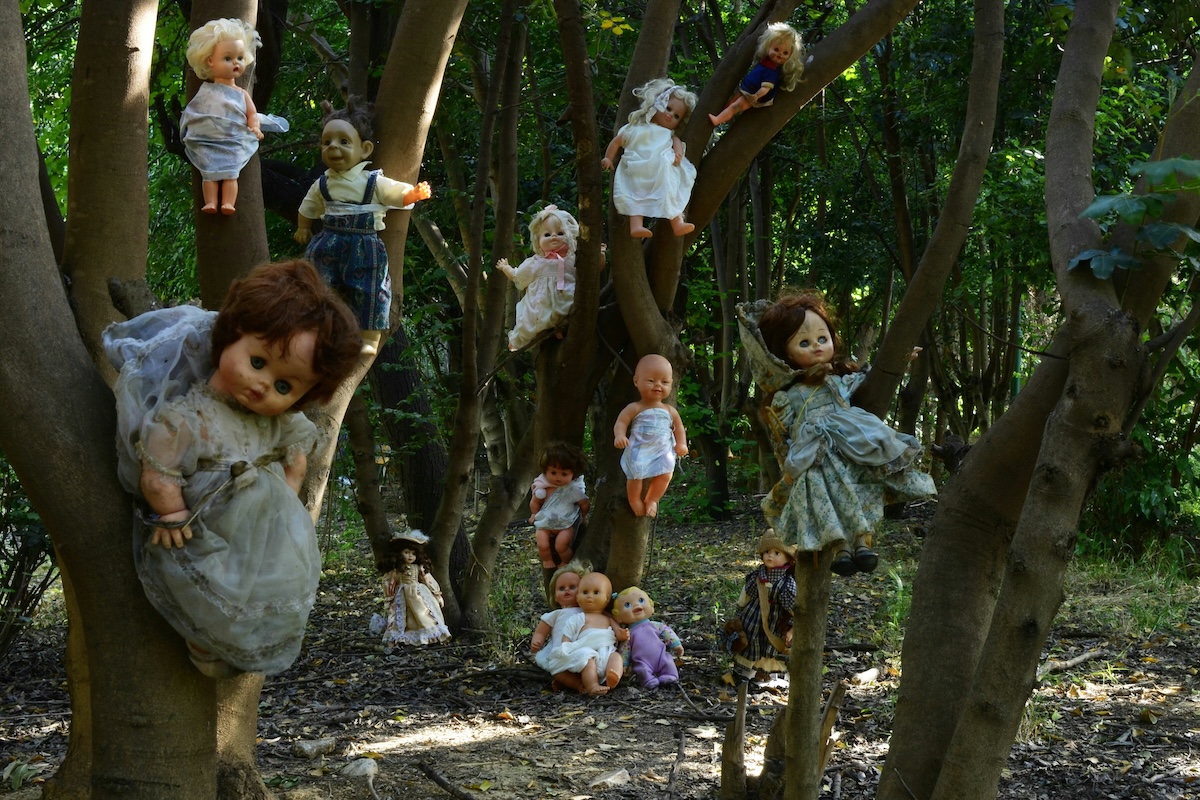
The Mystery of the “Haunted Doll Island” in Mexico, Covered in Hundreds of Creepy Toys
By: Sarah Stone
Skip to Section
Have you heard of the Island of Dolls in Mexico?
If you’re interested in dark tourism and morbid destinations, you may have stumbled across photos of Isla de las Muñecas—a small patch of land where hundreds of decaying dolls hang from trees, buildings, and fences, their sightless eyes staring at visitors who dare to make the journey.
Today, I’m here to tell you about the island’s history and how it has become a fascinating destination for travelers inquisitive about the macabre.
A Caretaker’s Grief Transforms an Island
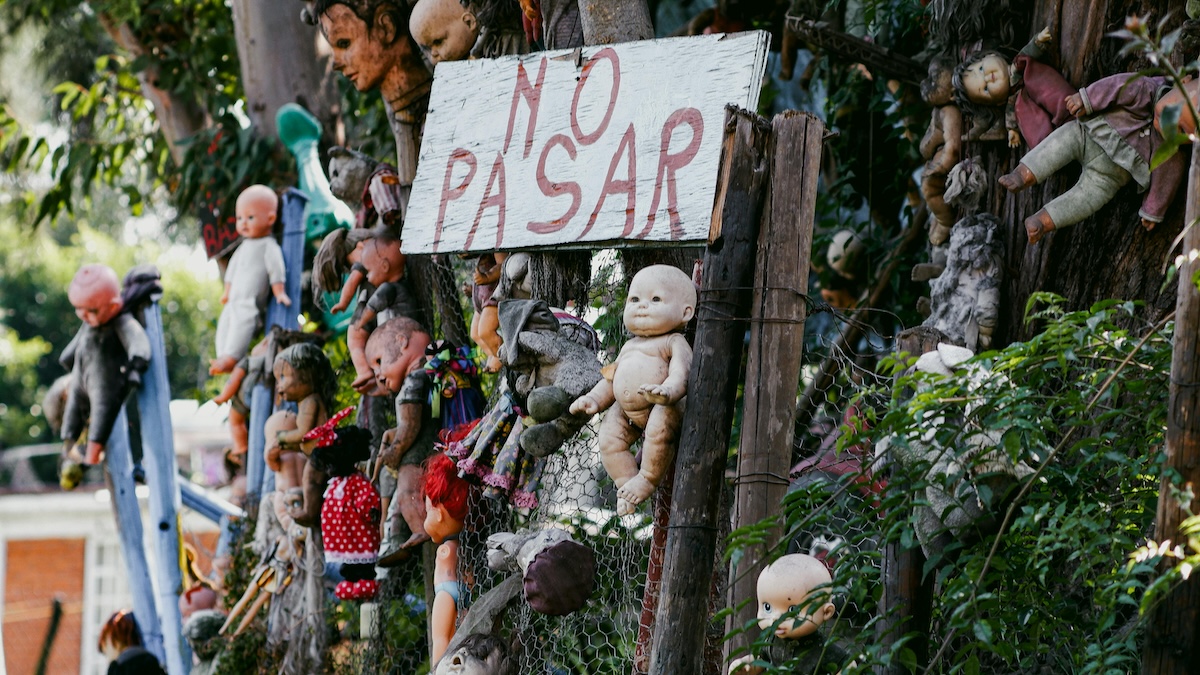
Photo by Bruno Cortés FP on Pexels.
The tale begins with Don Julian Santana Barrera, who, in the 1950s, chose to live alone on this small chinampa (floating garden) in the extensive canal system outside of the capital city. The island was never meant to be a tourist attraction—the story goes that it was the physical manifestation of one man’s attempt to appease what he believed was a restless spirit.
According to local lore, Don Julian discovered the body of a young girl who drowned in the canals near his island. Shortly thereafter, he found a doll floating in the same waters. Believing the doll belonged to the child, he hung it from a tree as a sign of respect and as a way to honor her memory. The next day, another doll appeared, and he hung that one from a tree as well.
This small act of remembrance soon evolved into something more complex. Don Julian worried that the girl’s spirit was haunting the island. He claimed to hear whispers, footsteps, and wails in the darkness. To appease the spirit, he continued collecting dolls, arranging them throughout his property. For over fifty years, he gathered discarded dolls from trash heaps and canals, sometimes trading produce from his gardens for more dolls from locals.
The island’s story took an even more macabre turn in 2001 when Don Julian’s nephew found him dead, floating in the same canal where he claimed to have found the girl decades earlier. According to locals, Don Julian repeatedly expressed fears that the dolls were alive and that the girl’s spirit was jealous and wanted to pull him into the water.
His death cemented the island’s reputation as a genuinely haunted location, not just a curiosity created by an eccentric man. Many believe Don Julian now haunts the island alongside the girl’s spirit, with some visitors claiming to hear whispers when they approach certain dolls.
The Eerie Transformation
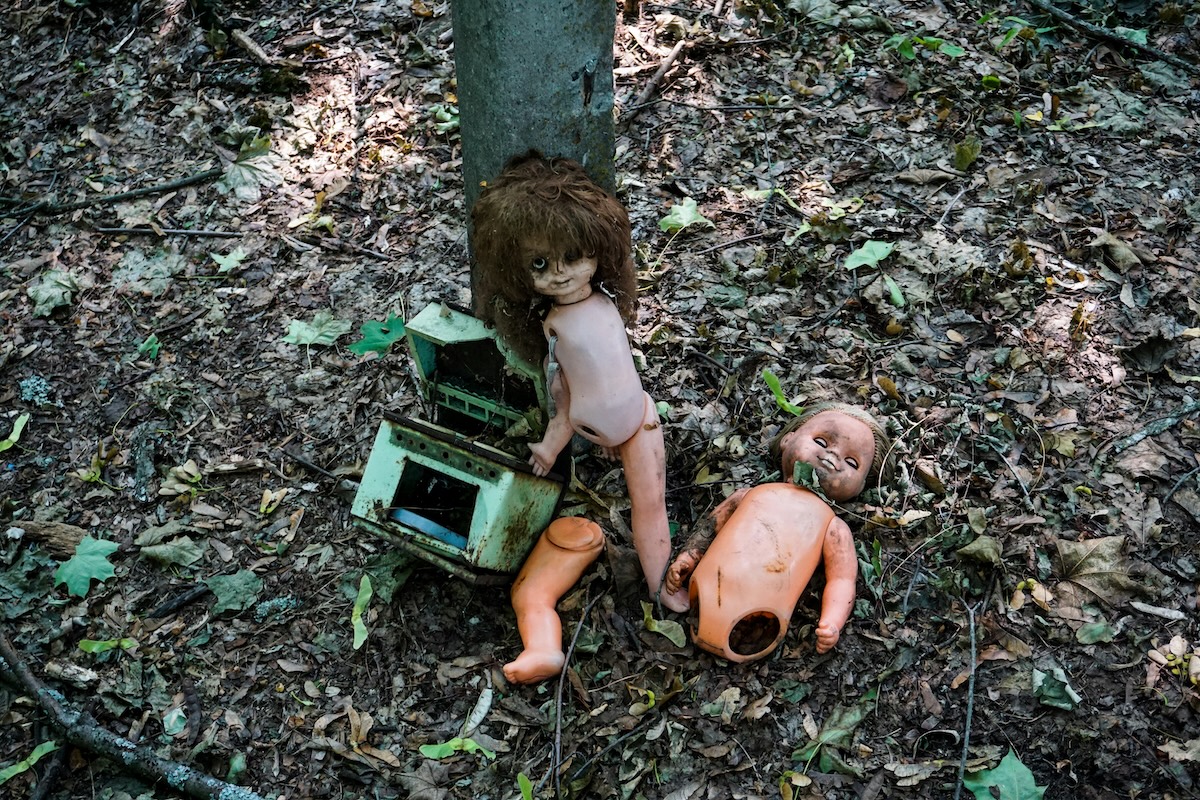
Photo by Ilja Nedilko on Unsplash
What makes the island particularly disturbing isn’t just the dolls’ presence, but their condition. After being exposed to the elements year after year, these once-cheerful children’s toys have decayed into nightmarish figures. Sunlight bleached their plastic bodies, rainwater stained their surfaces, and insects made homes in their hollow forms.
Some dolls are missing limbs; others have empty eye sockets, and many wear expressions that seem to have shifted from innocent smiles to creepy grimaces. Severed doll heads hang on strings, their hair matted and tangled. Plastic arms reach out from tree branches as if trying to grab passers-by.
Don Julian didn’t hang the dolls haphazardly. He arranged them in scenes throughout the island. Some dolls sit together in groups. Others are arranged to look as though they’re climbing trees or hiding behind leaves, creating the unsettling impression that they move when no one is watching.
After Don Julian’s death, his family considered removing the dolls and reclaiming the island for agriculture. The increasingly frequent visits from curious tourists changed their minds. They now maintain the collection, occasionally adding new dolls brought by visitors who feel compelled to leave their own contributions.
The island has appeared in many TV shows, documentaries, and travel blogs, cementing its status as one of the world’s most unusual destinations. This attention has brought both benefits and challenges. The increased traffic threatens the fragile ecology of the Xochimilco canal system, already under pressure from pollution and development.
Conservation efforts now focus on balancing the preservation of this unique cultural site with protecting the surrounding environment. Guides emphasize respect for both the bizarre collection and the delicate ecosystem that surrounds it.
Supernatural Claims, Cultural Context, and Scientific Explanations
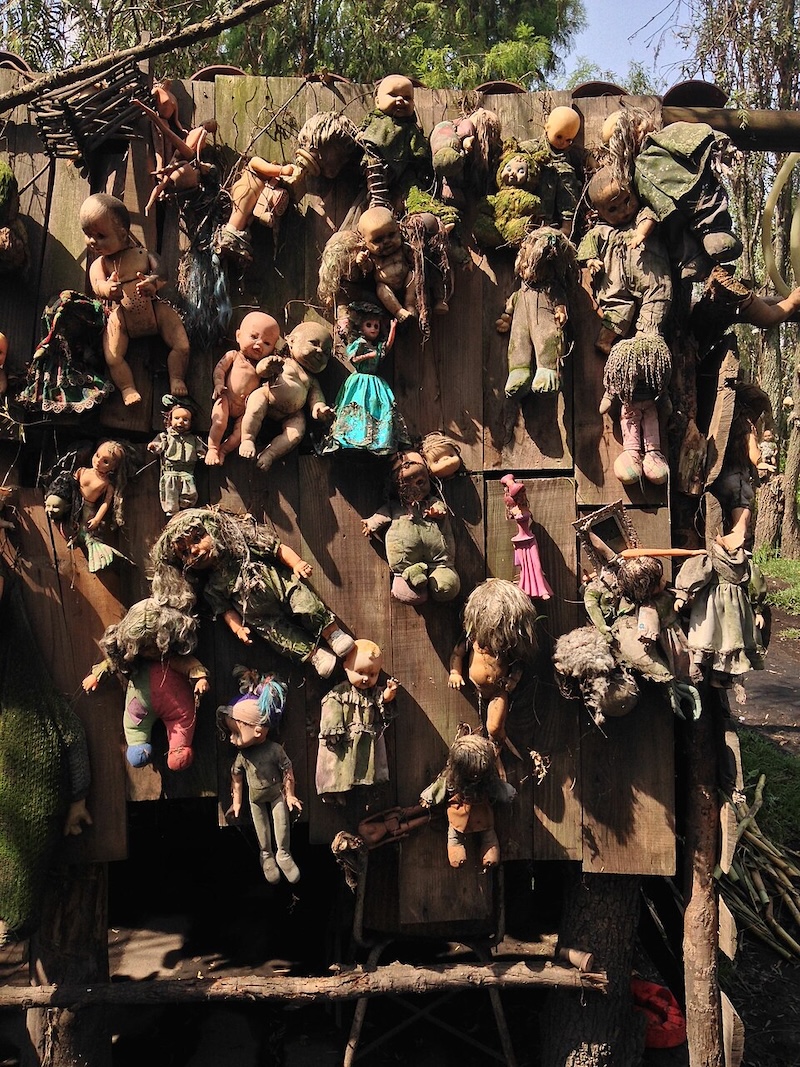
Image by Wa17gs on Wikimedia Commons.
Those who manage the island today (relatives of Don Julian) collect entrance fees from visitors and maintain the increasingly famous site. They also preserve and share the many strange stories associated with the dolls.
Photographers report unexplained malfunctions when attempting to capture images of certain dolls. Batteries drain inexplicably, and digital cameras capture strange orbs or light anomalies. Some visitors claim the dolls whisper to each other, their heads turning slightly to follow movement, though only when observed from the corner of one’s eye.
One particularly notorious doll, said to have been the first Don Julian hung, allegedly has changing eye colors depending on the time of day. Others swear they’ve heard girlish giggles emanating from clusters of dolls, even when no children are present on the island.
Psychics and paranormal investigators who have visited report unusually high electromagnetic readings and cold spots throughout the property, particularly around the original doll. Several mediums claim to have made contact with both the spirit of the drowned girl and Don Julian himself, who apparently continues his self-appointed role as caretaker even after death.
While the supernatural aspects draw many visitors, the island also represents something deeper about cultural attitudes toward death, grief, and remembrance in this region.
The island emerged during a time when the traditional Day of the Dead celebrations were still central to cultural identity but were beginning to be influenced by modernization and American commercial culture. Don Julian’s dolls—many of which were American toys discarded or lost—became unintentional symbols of this cultural fusion.
The practice of creating memorials for those who died tragically, particularly those who died in water (considered liminal space in many traditions), has deep roots in pre-Columbian beliefs. Water deities were among the most powerful in ancient Aztec religion, and those who died by drowning were thought to be specially chosen by these gods.
Don Julian’s island, therefore, represents a uniquely modern expression of ancient beliefs—a folk religious site created spontaneously through one man’s response to tragedy.
Some psychologists suggest the island represents a compelling example of one man’s externalized grief response. Don Julian may have used the dolls as physical manifestations of his inability to save the drowning girl—each doll becoming both a symbol of failure and an attempt at redemption.
The naturally occurring deterioration of the dolls—their paint fading in patterns that create the illusion of changing expressions—provides a rational explanation for some of the reported phenomena. Pareidolia, the tendency for humans to see faces and intentionality in random patterns, explains why visitors perceive the dolls as watching them.
The acoustics of the island, surrounded by water and filled with hollow plastic forms that can capture and distort sounds from the canals, might account for the whispers and giggles reported by sensitive visitors.
Visiting the Haunted Doll Island
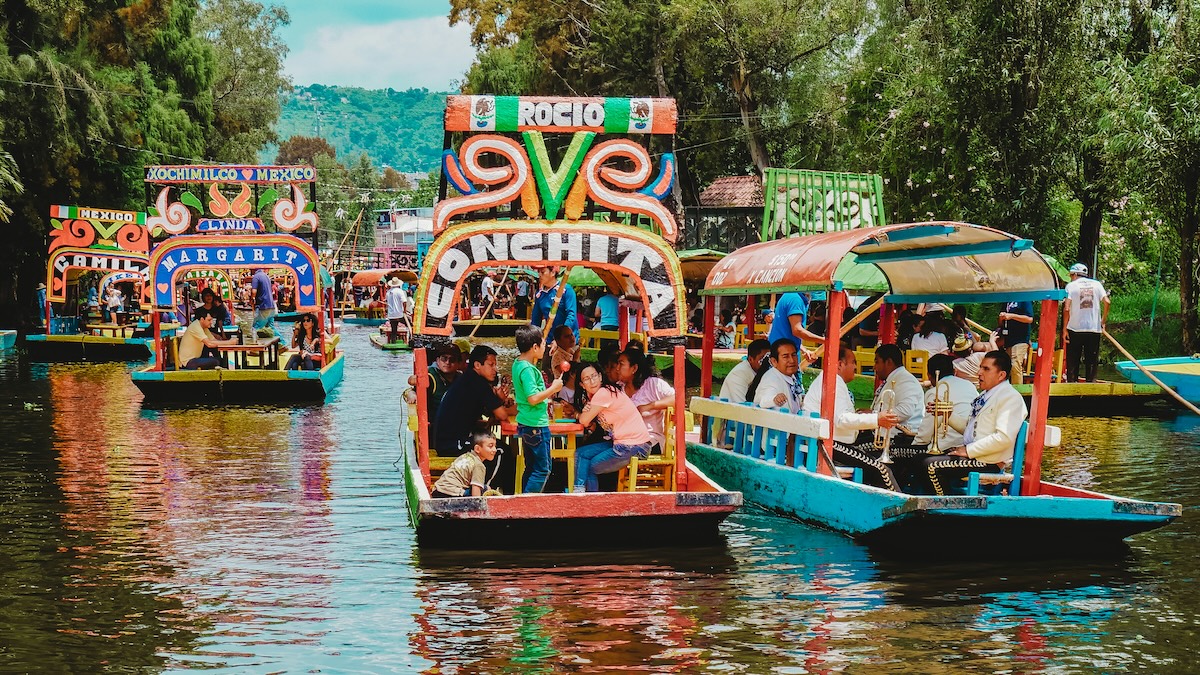
Photo by Roberto Carlos Román Don on Unsplash
Today, the Island of the Dolls exists as a strange intersection of tourist attraction, memorial, folk art installation, and allegedly haunted location. It draws thousands of visitors annually, from casual tourists looking for unusual photographs to serious paranormal researchers conducting overnight investigations.
Reaching the Island of the Dolls requires effort and determination. You can hire a trajinera (flat-bottomed boat) and a guide willing to make the journey, which takes approximately two hours from the main Xochimilco docks. The trip passes through increasingly remote waterways, where tourist-oriented boats become scarce, and the atmosphere grows quieter.
The experience of approaching the island has been described as deeply unsettling: from a distance, what appear to be strange fruits hanging from trees gradually come into focus as doll parts swaying in the breeze. The first sight of a sun-bleached plastic head or a disembodied limb dangling over the water frequently elicits gasps from even the most stoic visitors.
Many find the experience profoundly unsettling, particularly as dusk approaches and shadows lengthen across the island. The sight of hundreds of decomposing dolls silhouetted against the darkening sky has sent more than one visitor hurrying back to their boat.
Others find unexpected beauty in the decay—a poignant reminder of mortality and the passing of time. The contrast between the childish innocence the dolls once represented and their current grotesque appearance creates a powerful memento mori for contemplative visitors.
Those brave enough to see the Island of the Dolls for themselves should prepare for a full-day excursion from the capital. The journey through Xochimilco’s canals provides a glimpse into a traditional way of life that has persisted for centuries, with chinampas still producing flowers and vegetables using ancient agricultural methods.
Visitors should arrange their trip with official guides at the Xochimilco docks, as unauthorized boats may not know the route or might overcharge for the journey. The full excursion typically takes 4-6 hours round trip.
Respectful behavior is essential—while photography is permitted, treating the site as merely a backdrop for lighthearted selfies is considered inappropriate by the caretakers. Many visitors bring small offerings or even dolls to contribute to the collection, though conservation concerns have led to requests that these additions be limited.
Whether you believe in the supernatural presence on the island or view it as a fascinating example of outsider art, the Island of the Dolls stands as one of the world’s most unique destinations—a place where tragedy, folk beliefs, and one man’s obsession created something genuinely unforgettable in the ancient waterways of Xochimilco.
About the Author
 As the editor-in-chief of Frayed Passport, my goal is to help you build a lifestyle that lets you travel the world whenever you want and however long you want, and not worry about where your next paycheck will come from. I've been to 20+ countries and five continents, lived for years as a full-time digital nomad, and have worked completely remotely since 2015. If you would like to share your story with our community, or partner with Frayed Passport, get in touch with me using the form on our About page.
As the editor-in-chief of Frayed Passport, my goal is to help you build a lifestyle that lets you travel the world whenever you want and however long you want, and not worry about where your next paycheck will come from. I've been to 20+ countries and five continents, lived for years as a full-time digital nomad, and have worked completely remotely since 2015. If you would like to share your story with our community, or partner with Frayed Passport, get in touch with me using the form on our About page.Featured image by Maria Nita on Unsplash
Information published on this website and across our networks can change over time. Stories and recommendations reflect the subjective opinions of our writers. You should consult multiple sources to ensure you have the most current, safe, and correct details for your own research and plans.
Frayed Passport is a participant in the Amazon Associates Program, an affiliate advertising program designed to provide a means for sites to earn advertising fees by advertising and linking to Amazon.com. We also may share links to other affiliates and sponsors in articles across our website.




